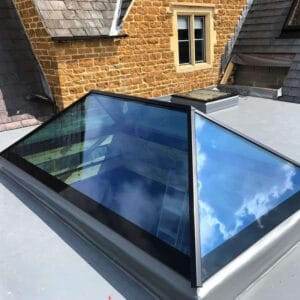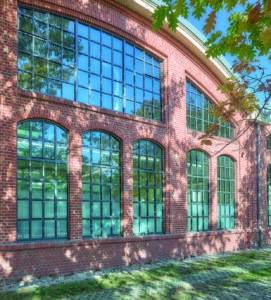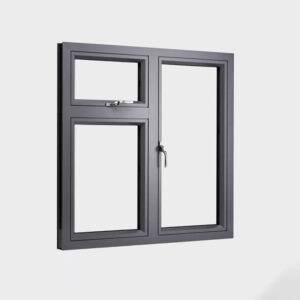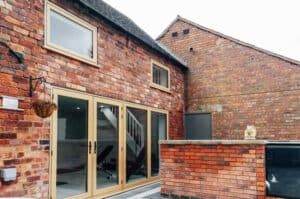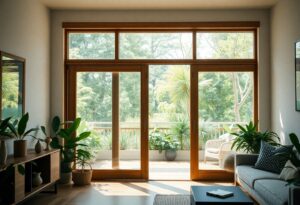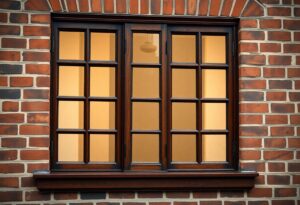There’s a lot more to your windows than meets the eye, especially when it comes to thermal breaks and spacer bars. These often overlooked components play a pivotal role in enhancing energy efficiency and maintaining comfort within your home. Understanding how they function can significantly impact your window performance, helping to mitigate heat loss and reduce condensation. In this post, you’ll discover why these elements are the unsung heroes of R2 window engineering and how they can positively affect your living environment.
Understanding Thermal Breaks
While assessing the efficiency of modern windows, you must consider the role of thermal breaks, which are imperative components in minimising heat transfer. They help maintain indoor comfort and energy efficiency by acting as a barrier between the inner and outer sections of the window frame. For more information on this subject, you can refer to the Board of Trustees.
Definition and Importance
Any understanding of thermal breaks begins with recognising their definition: they are materials that reduce thermal conductivity between different elements of a structure. Their importance lies in enhancing energy efficiency and improving comfort levels by preventing heat loss in colder months and minimising heat gain during warmer periods.
Types of Thermal Breaks
Below are the primary types of thermal breaks, which play a significant role in window performance:
| Polyamide Thermal Breaks | Highly effective in insulating and widely used. |
| Vinyl Thermal Breaks | Cost-effective and efficient for standard applications. |
| Rubber Thermal Breaks | Provide flexible insulation but may degrade over time. |
| Metal Thermal Breaks | Offer durability but may conduct heat unless insulated. |
| Composite Thermal Breaks | Blend materials for optimal performance and cost-effectiveness. |
Assume that identifying the right thermal break type can optimise your window’s thermal performance for years.
Further exploring thermal breaks, you will find various materials used to create them and their specific applications. Each type maintains thermal performance differently, suited to specific construction needs:
| High-Performance Polyamide | Ideal for energy-efficient buildings. |
| Standard Vinyl | Great for lightweight construction. |
| Flexible Rubber | Adapts to movement, but monitor longevity. |
| Insulated Metal | Use with extreme care in energy-intensive areas. |
| Composite Options | Versatile in various climates for effective insulation. |
Assume that investing in the right thermal breaks can significantly enhance your building’s energy efficiency.

The Role of Spacer Bars
Assuming you’re exploring the intricacies of R2 window engineering, you’ll soon discover that spacer bars play a vital role in maintaining thermal efficiency and structural integrity. By providing a separation between the panes of double or triple glazing, spacer bars help to minimise heat transfer and condensation, enhancing your window’s performance. Their contribution to reducing energy costs and improving overall comfort in your living spaces cannot be overlooked.
Functions of Spacer Bars
Across various window systems, spacer bars primarily serve to maintain the appropriate distance between glazing units. This distance is imperative for effective thermal insulation and condensation control. Additionally, they contribute to the overall strength of the window assembly, ensuring that the glass is securely held in place whilst allowing for the necessary flexibility to account for thermal expansion and contraction.
Materials Used in Spacer Bars
The materials utilised in spacer bars can profoundly influence their performance and longevity. Commonly constructed from aluminium, stainless steel, or composite materials, each option comes with specific benefits and drawbacks regarding thermal conductivity, aesthetics, and durability.
Indeed, the choice of materials for your spacer bars is significant. Aluminium is popular for its lightweight strength; however, it possesses higher thermal conductivity, which may result in increased heat loss if not adequately insulated. In contrast, stainless steel offers superior durability but can be more expensive. On the other hand, composite materials excel in thermal insulation, minimising heat transfer while offering a robust and aesthetically pleasing option. It’s imperative to select the right material that aligns with your project requirements to ensure long-lasting performance and energy efficiency.
Benefits of Thermal Breaks and Spacer Bars
Any consideration of window performance must include the advantages thermal breaks and spacer bars offer. These features contribute significantly to improved energy efficiency and comfort in your home. By optimising thermal performance, they help mitigate heat loss and reduce energy bills. For further insights, you can explore SECONDARY WINDOWS BRING STELLAR SAVINGS FOR ….
Energy Efficiency
Bars provide an effective barrier that minimises heat transfer, ensuring your living space remains comfortable year-round. This means lower energy consumption, and consequently, reduced costs on your heating and cooling systems.
Structural Integrity
Integrity in window design is enhanced by incorporating thermal breaks and spacer bars. These elements work together to bolster the overall strength of your windows, ensuring they withstand external pressures while maintaining long-term functionality. With the right installation, you can significantly *prolong the life of your windows* and *reduce the risk of costly repairs down the line*.
Benefits extend beyond mere functionality; the use of thermal breaks and spacer bars can *considerably enhance the insulation of your windows*. By doing so, they not only protect against extreme weather conditions but also *improve the safety of your home*, as robust windows are less prone to failure. Investing in these hidden heroes leads to a more sustainable and comfortable living environment.
Design Considerations
Not all thermal breaks and spacer bars are created equal. You must evaluate their suitability based on your specific window design and the performance requirements. Consider factors such as material compatibility, thermal efficiency, and aesthetic integration to ensure that your selection enhances the overall function and style of your windows.
Integration into Window Systems
Integration of thermal breaks and spacer bars into your window systems is vital for optimal performance. They should be seamlessly incorporated to enhance thermal insulation and support the integrity of the whole assembly. By doing so, you can ensure that your windows provide excellent energy efficiency and long-term durability.
Compliance with Building Standards
For your window designs to be successful, adherence to building standards is non-negotiable. Failure to comply can lead to serious legal and financial ramifications. Ensure that your thermal breaks and spacer bars meet the specific regulations set forth in your region to avoid complications.
Understanding the various building standards that apply to window systems is necessary for you as a designer. Compliance not only protects your project but also guarantees that your thermal breaks and spacer bars provide maximum energy efficiency and safety. By implementing standards, you can mitigate the risk of costly errors and potential litigation. Always consult local codes and collaborate with industry professionals to ensure your selections align with current regulations.
Common Challenges and Solutions
Now, as you explore the intricacies of thermal breaks and spacer bars in R2 window engineering, you may encounter a variety of challenges. Addressing these issues requires a solid understanding of your materials and techniques. Familiarise yourself with guidelines such as MCO 5530.14A MARINE CORPS PHYSICAL SECURITY to enhance your practices in overcoming these hurdles effectively.
Installation Issues
By ensuring proper installation techniques, you can minimise common pitfalls associated with thermal breaks and spacer bars. This includes using appropriate tools and following manufacturer guidelines to achieve optimal performance and longevity.
Maintenance and Longevity
Before commenceing on your project, it’s necessary to consider the long-term maintenance of thermal breaks and spacer bars. Proper care and regular inspections will significantly enhance the lifespan and efficiency of your windows.
A well-maintained window system can provide you with significant energy savings and enhanced structural integrity. Conducting routine checks for any signs of wear, sealing leaks, and cleaning components will prevent potential failures. Investing time in maintenance not only extends the life of your installation but also contributes to overall safety and comfort in your living or working environment. This diligence will help you avoid costly repairs or replacements down the line.

Case Studies
All key instances of the effective use of thermal breaks and spacer bars in R2 window engineering highlight their significance. Here are some notable case studies:
- Project A: Achieved a 40% reduction in heat loss through window systems.
- Project B: Increased energy efficiency ratings by 3 stars within one season.
- Project C: Demonstrated a 25% improvement in condensation resistance.
- Project D: Reported over a 50% decrease in sound transmission.
Successful Implementations
Implementations of thermal breaks and spacer bars in various projects have proven to elevate energy performance and enhance comfort levels in buildings. Notably, these technologies will improve sustainability outcomes, attracting positive attention from stakeholders and clients alike.
Lessons Learned
Across numerous projects, critical insights emerged regarding the integration of thermal breaks and spacer bars. These components are crucial not only for energy efficiency but also for overall structural integrity and performance.
With analyses indicating that projects which embraced thermal breaks often saw significant improvements in lifespan and operational costs, it becomes evident that early adoption leads to favourable results. Additionally, oversights in installation can lead to subpar performance and potential long-term damage, reinforcing the necessity for careful planning and execution. This approach ensures equipped structures do not just meet standards but exceed expectations in both residential and commercial spaces.
Final Words
Conclusively, as you explore the intricacies of R2 window engineering, it’s necessary to recognise the significant roles played by thermal breaks and spacer bars. These elements not only enhance the energy efficiency of your windows but also contribute to their overall structural integrity. By understanding and appreciating their functions, you can make informed decisions that elevate the performance and durability of your building projects. Embrace these hidden heroes to ensure your window designs stand the test of time.
FAQ
Q: What are thermal breaks in window engineering?
A: Thermal breaks are materials inserted between conductive elements of window frames, typically made from plastics or other non-metallic substances. Their primary function is to reduce the transfer of heat and cold, thus enhancing the energy efficiency of the window. By isolating the interior from the exterior, thermal breaks help maintain consistent indoor temperatures and reduce heating and cooling costs.
Q: How do spacer bars contribute to the performance of double-glazed windows?
A: Spacer bars play a vital role in double-glazed windows by maintaining the separation between the two panes of glass. They are typically made from materials with low thermal conductivity, which helps to minimise heat loss around the edges of the glazing unit. Additionally, spacer bars prevent condensation from forming inside the window, ensuring improved insulation and comfort within the living space.
Q: What benefits do thermal breaks and spacer bars provide for homeowners?
A: The integration of thermal breaks and spacer bars in window engineering leads to numerous benefits for homeowners. These components help increase energy efficiency by reducing heat transfer, resulting in lower energy bills. Furthermore, they contribute to a more comfortable indoor environment by preventing drafts and cold spots, and they can also enhance the longevity of the window units by mitigating the risk of condensation and mould growth.
Q: Are thermal breaks and spacer bars environmentally friendly?
A: Yes, the use of thermal breaks and spacer bars can be considered environmentally friendly as they contribute to energy efficiency. By reducing the overall energy consumption of heating and cooling systems, they help decrease greenhouse gas emissions. Additionally, high-quality materials used in these components often have longer lifespans, reducing waste and the need for frequent replacements.
Q: How can I ensure my windows are equipped with effective thermal breaks and spacer bars?
A: To ensure your windows are fitted with effective thermal breaks and spacer bars, it is advisable to consult with professional window manufacturers or installers. Look for products that clearly specify the use of reputable thermal break materials and low-conductivity spacer bars. Additionally, checking for energy efficiency ratings, such as energy performance certificates, can provide further assurance of quality and effectiveness.


